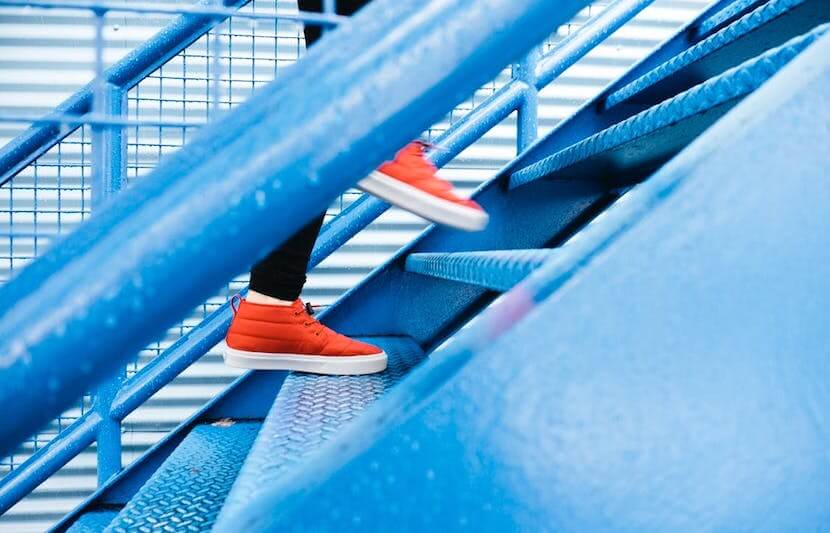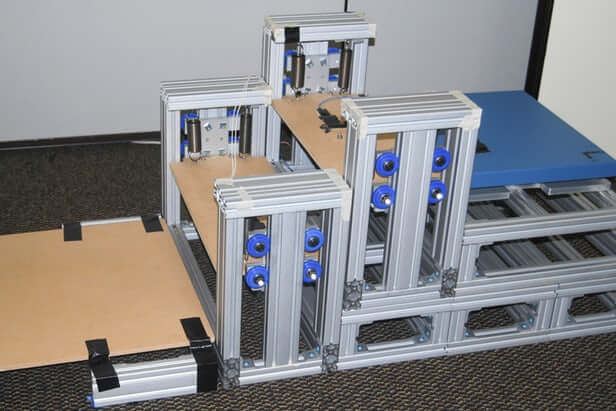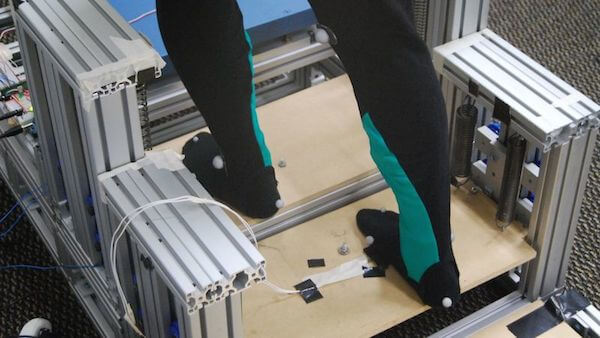Researchers at Georgia Tech and Emory University have developed a device that reuses the energy generated from descending stairs to make climbing stairs easier.
The device provides a practical solution for millions of people who find it difficult to navigate stairs for various reasons, including degenerative joint disease, injury, and surgery.
The new device, interactive energy-recycling assistive stairs that store the energy generated by a user during descent and return energy during ascent, will make it much easier for people who need help walking up and down the stairs. The device can simply be placed on top of existing stairs, so there’s no need for costly renovations.
The research team is headed by Karen Liu, an associate professor in the School of Interactive Computing at Georgia Tech, and Lena Ting, a professor of biomedical engineering in the Wallace H. Coulter Department of Biomedical Engineering at Georgia Tech and Emory.
The full study is published in PLOS ONE, a science journal.
How does the device work?
The prototype device has two stairs, each loaded with springs and equipped with pressure sensors. The device’s stair treads move up and down the height of one step. When a user walks down the stairs, the tread is even with the floor, and the step lowers as it accepts the user’s weight, causing springs attached to the treads to be compressed and saving energy generated through impact. After it is lowered, the tread is latched in place until someone walks up the stairs. This function reduces braking forces at the user’s ankle by 26 percent.
The stored energy is released to the user when walking up the stairs. When the stair senses someone walking up, the tread latch is released so that it lifts up the back leg. This function reduces stress on the user’s knee by about 37%, as compared to conventional stairs.
“Unlike normal walking where each heel-strike dissipates energy that can be potentially restored, stair ascent is actually very energy efficient; most energy you put in goes into potential energy to lift you up,” Liu said in a statement.
“But then I realized that going downstairs is quite wasteful. You dissipate energy to stop yourself from falling, and I thought it would be great if we could store the energy wasted during descent and return it to the user during ascent.”
The device is designed to be energy-efficient, tapping into the energy released by a user during descent, which would otherwise have been wasted.
“Walking down stairs is like tapping the breaks [sic] of your car while revving the engine,” Ting said in a statement.
“Your legs use a lot of energy bracing each step to avoid falling too fast. Our stairs store that energy rather than wasting it.”
The device is also designed to take the stress off the ankle, according to Yun Seong Song, who built the device as a postdoctoral researcher at Georgia Tech, and is currently an assistant professor at Missouri University of Science and Technology.
“The spring in the stairs, instead of the ankle, acts as a cushion and brake,” Song said in a statement.
“The gentle downward movement alleviates work by the trailing ankle, which is what keeps you balanced and prevents you from falling too fast on normal stairs.”
Since the device can be placed on existing stairs, it could be an easy and relatively inexpensive solution for those who have problems walking up and down stairs.
“Current solutions for people who need help aren’t very affordable. Elevators and stair-lifts are often impractical to install at home,” Liu said in a statement.
“Low-cost, easily installed assistive stairs could be a way to allow people to retain their ability to use stairs and not move out of their homes.”
The device would also be practical for those with a temporary need for help going up and down stairs, such as individuals recovering from injury or surgery and pregnant women.
“Maintaining mobility is very much a use-it-or-lose-it thing. It’s important to keep people walking and independent through injury and aging to maximize quality of life,” Ting said in a statement.
The research was supported by a grant from the National Science Foundation (EFRI-1137229).
Development of the device
The prototype device has 2 stairs, can be used by one person at a time, and is limited to users up to 122 kg (or 267 pounds).
The University Network (TUN) spoke with both Liu and Ting to find out how they plan on developing the device.
“The immediate next steps are to build a full staircase … and to test them on people who need assistance using stairs,” Ting told TUN.
The researchers believe that it’s possible to develop the device for use by multiple users at a time.
“The current prototype is designed for installing in people’s homes where one user at a time is probably not a major issue,” said Liu.
“With further development, we believe that it is possible for it to be used in other applications with simultaneous multiple users.”
In terms of the weight limitation, the researchers acknowledge that the prototype cannot be adjusted while in motion, but confirm that it could be adapted for use by heavier users by using stiffer springs.
“Currently we change the stiffness manually by simply unhooking or hooking a few springs to get the desired stiffness,” said Liu.
“Our current model cannot be changed on the fly for different people. However, even if the springs are not optimized to someone’s weight, you would still benefit from the stairs. In fact, we have not done any formal studies to select the optimal spring stiffness, but simply selected one value to test for proof of concept.”
The researchers have filed a provisional patent for the device.
Conclusion
The energy-recycling assistive stairs could improve the lives of millions of people who need help walking up and down stairs. The device would be an easy, practical, and relatively inexpensive solution, whether the need for assistance is permanent or temporary.
“To me the most important part of this technology is its ‘simplicity,’ ” Liu told TUN.
“The struggle with stair negotiation is very prevalent among older adults. To solve a real-world problem like this, a simple solution is usually the best solution.”





